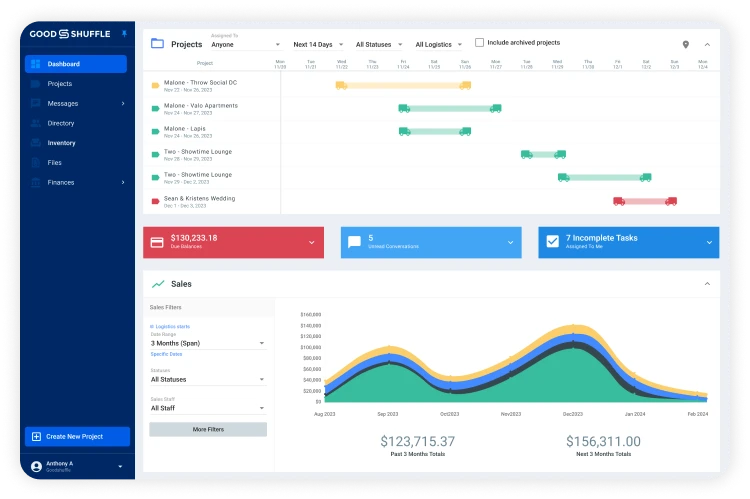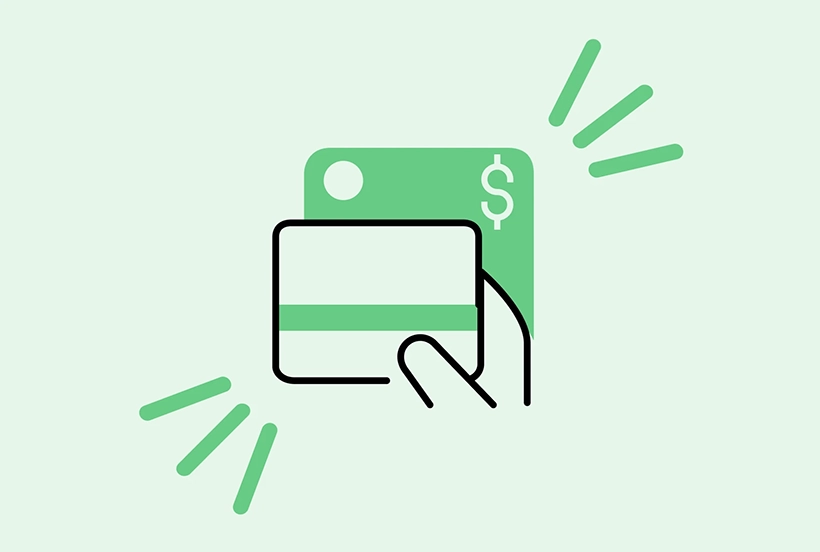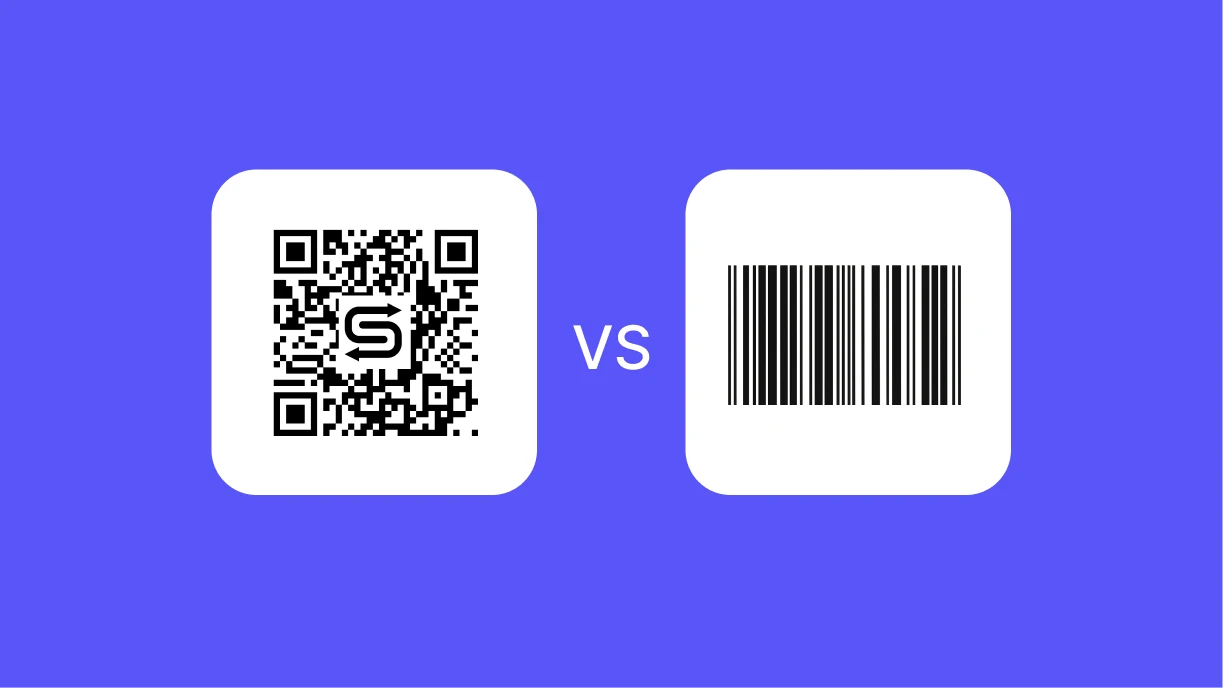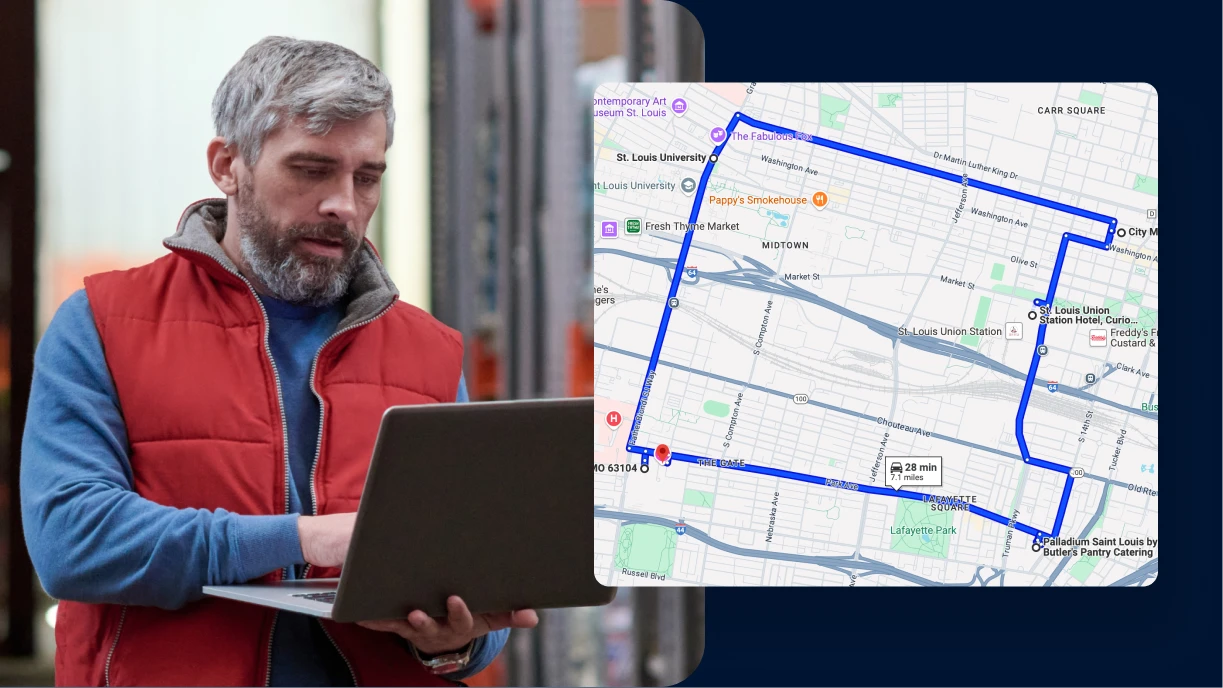When event business owners hear the term pricing strategy, they typically think about what they charge for rental items and services. This can range from the hourly rate of a venue to catering and entertainment. However, these costs are only one part of pricing strategy. Another key area is the additional fees beyond rental items and services.
As an event pro, you are a service professional at heart. So it can feel scary and even guilt-inducing to charge additional event rental fees to clients. But some additional fees are essential for making your business run smoothly, and more profitably. Here are 5 additional rental fees all event pros should consider.
1. Rush Fees
A client puts in a last-minute request that leaves you and your team scrambling. You have to work extra hours and expedite your inventory delivery. Shouldn’t your team be compensated for the extra time and energy they put into the project?
You can charge a rush fee when a customer inquires about an event or leaves a contract unsigned outside of your typical timeframe parameters. When this happens, you need to make quicker decisions — and sometimes add last-minute staff or resources. Events don’t just magically happen, but clients don’t know that. You have every right to charge for the mountains you’re moving.
How to Charge a Rush Fee
First, determine your timeframe parameters. What do you consider a rush? It could be something like having an inquiry come in less than 1 month before the event date, or not having a contract signed within 2 weeks of the event.
Then, determine your fee structure. You can do a flat fee (ex: after the deadline, charge $75 for every day closer to the event that a contract is not signed) or a percentage (ex: charge 10% of the total cost of the quote if the contract is signed after the deadline).
Additional Keys to Success
- Make sure you outline your rush fee in the terms and conditions of your contract — and if the contract changes during the project, make sure the client always signs the latest version. That second part is often forgotten, but industry software like Goodshuffle Pro makes it easy by automating the process.
- If a client complains after getting charged a rush fee, be transparent and explain why your business requires it. Clients may not understand what goes into producing an event, but when they realize, for example, that late changes require last-minute staffing, they often become more reasonable.
- If you want to be extra transparent about your rush fee, you can send emails about it toward the start of the project, rather than just including it in the terms and conditions. This is another place where Goodshuffle Pro can help, this time with custom email templates.
2. In-Person Consultation Fees
Showing a client your warehouse so they can get a more accurate picture of your inventory takes time. You give them a tour, answer all their questions, hash out the details of a project. Just like a rush fee, you should be properly compensated for the time you spent.
You can charge an in-person consultation fee if clients or potential clients ever visit your showroom, studio, or warehouse for a consultation. You’re spending your time and energy to give them peace of mind with the items/services they’re renting. Your expertise is valuable!
How to Charge a In-Person Consultation Fee
Some companies offer this as a complimentary service, while others charge for it. We recommend charging for it, whether by flat fee (ex: for each consultation or visit charge $45) or hourly (ex. $25 for each hour of the consultation or visit). But ultimately it’s up to you how you want to structure it. Some questions to ask yourself:
- How much time goes into preparing for and actually doing a consultation? Whether it’s you or your sales team leading these, you can work backward to determine how much to charge based on the value of this time.
- What services do you offer during the consultation? Clients will be more willing to pay if you show them your warehouse, let them touch/feel inventory options, and/or make their vision come to life on a vision board.
- What is your target market willing to pay? If you’re serving high-end brides, they’re going to be more willing to pay for a consultation than a lower-budget event.
Additional Keys to Success
- Research your competitors to see what they charge for consultation fees. This may give you a better idea of what clients in your target market are willing to pay. You can consider applying the consultation fee as a credit towards the final booking to incentivize clients to take advantage of this service.
- Demonstrate the value of the consultation so clients understand what they’re paying for. If you’re offering special services, list those on your website — a marketing channel that more and more event companies are investing in.
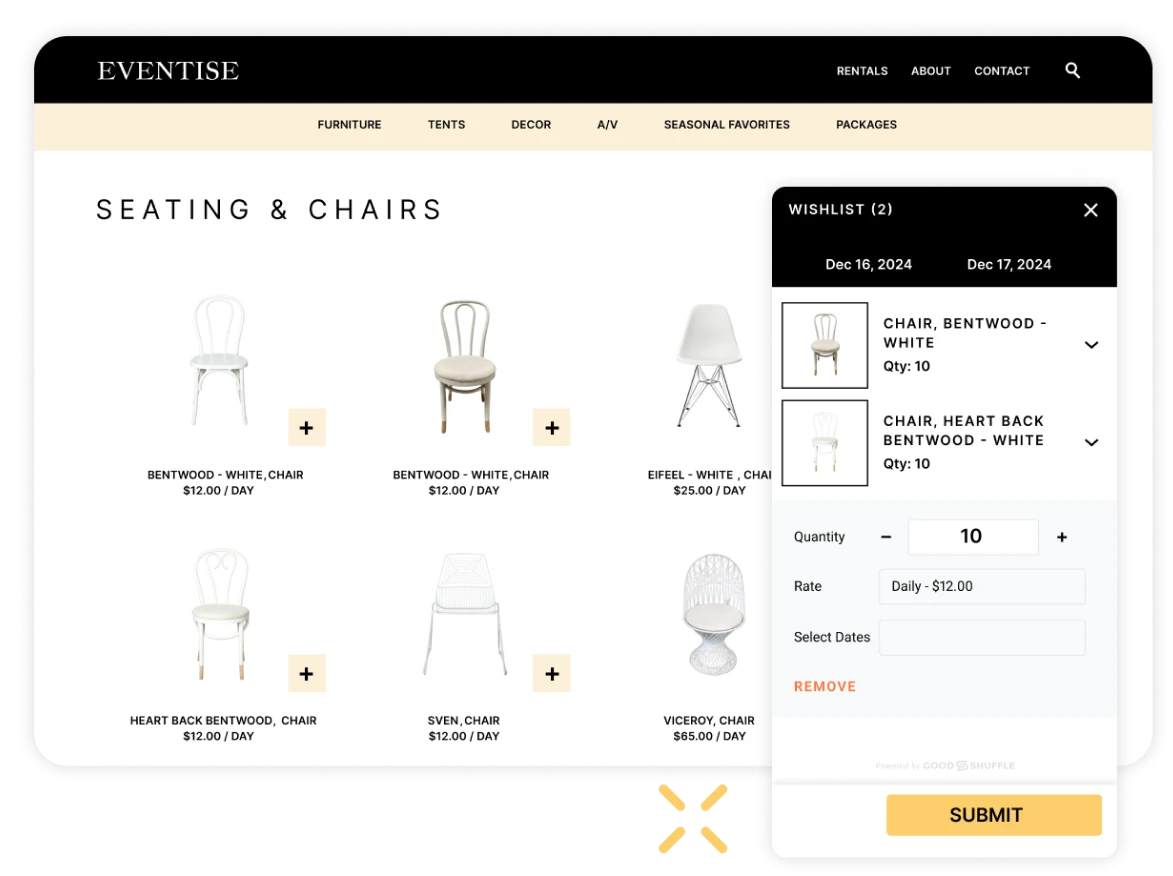
3. Off-Hours Fees
Whether you’re dealing with the chaos of multiple requests or a demanding project, your work will often stretch beyond your typical hours. Just as how you would change a rush fee, that extra time should not go unappreciated.
Charge clients an off-hours fee when they want you to pick up or drop off in the early morning or late evening. By offering more flexible hours like this, you give yourself more space in your schedule to do more deliveries. In charging for these hours, you get extra money in your pocket that you can use to boost profit margins as well as pay your staff who work these early/late shifts. When you’re asking your crew to be on-site at 5 a.m. or be out until 2 a.m., it’s no surprise that you won’t get as many raised hands as you want. Motivate them with money!
How to Charge an Off-Hours Fee
Some common ways to charge are a simple flat fee (ex: $200) or a percentage of the total booking cost (ex: 5-10%). You can also charge a flat fee per crew member who’s working the shift (ex: $50/crew member).
It’s important to remember not to limit yourself; you can charge one of the above, then charge an additional flat fee or percentage per hour (ex: $50/crew member, + $15/hour).
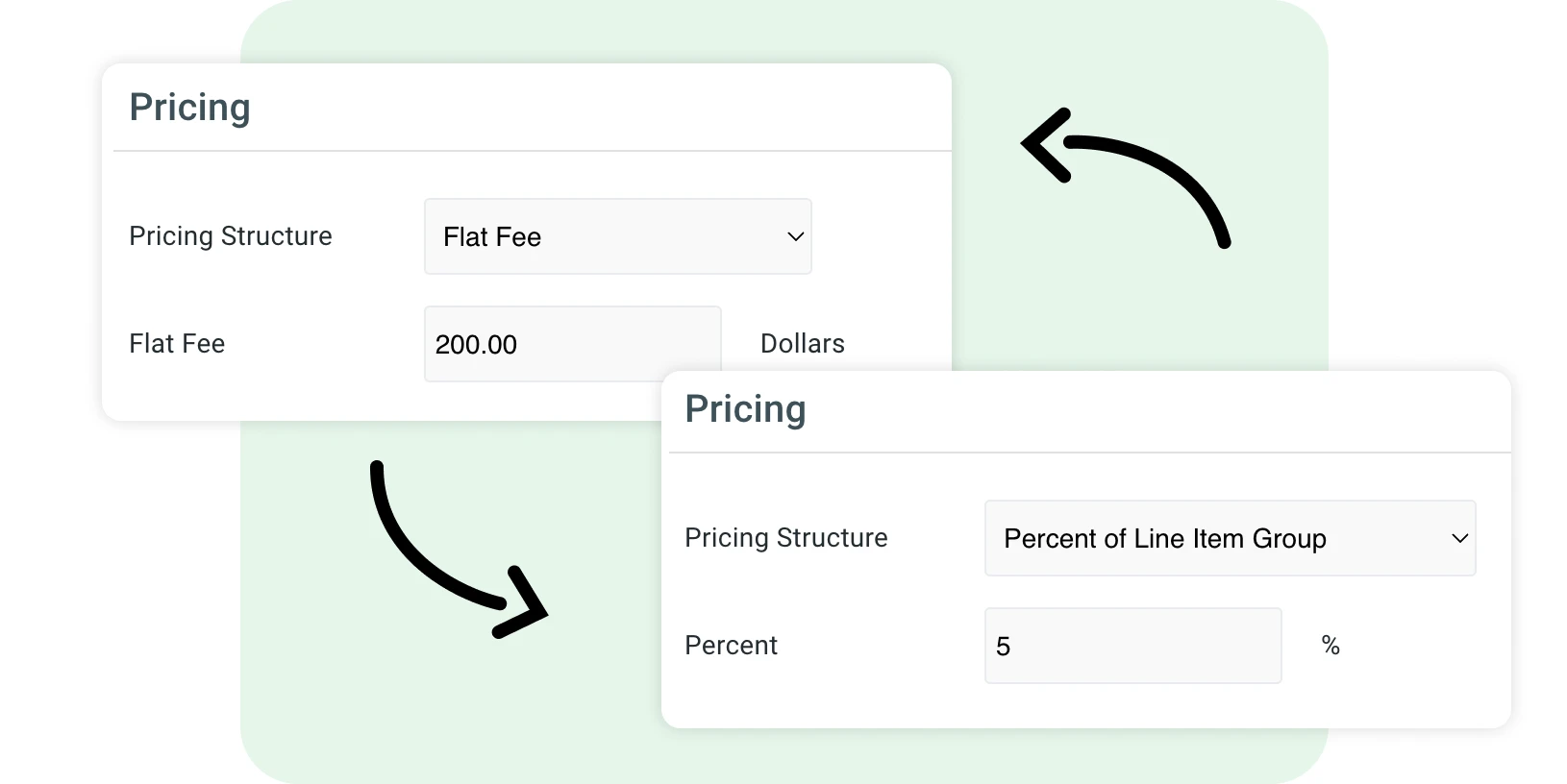
Additional Keys to Success
- Clearly explain these details in your terms and conditions, then get your client’s signature on the contract.
- Although the contract covers you, it’s also a good idea to remind clients of this fee ahead of their event. They will appreciate the notice and it will prevent them from claiming that they had no knowledge of the rules if they make a request.
4. Late Fees
If a client’s event runs longer than expected, that puts your team behind schedule for cleanup and future use of that inventory. Imagine you have an event later that night that needs those same chiavari chairs, and now set up will have to be delayed.
Charge a late fee when you and your crew have arrived for pickup at an event, but the event is still in full swing. When the client signed the contract, they agreed to your terms and conditions (where this should be clearly outlined). When your crew has multiple pickups to make in one night, the schedule is crucial. Your team needs to be able to collect the equipment and move to the next venue. If the event runs late your crew has to work later, which if common, can potentially be bad for your employee retention.
Common Fee Models:
How to Charge a Late Fee
First, determine if you want to add a grace period before applying late fees. If so, determine what this is: 15 minutes? An hour? Longer?
From there, you can either charge a flat fee (ex: $500) or a percentage of the total booking (ex: 5-10%). You can also charge more for each additional timeframe a client is late. For example, the cost increases by $50 for every additional 15 minutes they’re late.
Consider requiring a security deposit that you only give back if pickup happens on time. This is typically a flat fee that can also cover other costs, like damage fees.
Additional Keys to Success
- Consider requiring a security deposit that you only give back if pickup happens on time. This is typically a flat fee that can also cover other costs, like damage fees.
- To make the overall fee process easier, capture a client’s credit card information when they first pay so it’s on file and easier to charge.
- As with other fees, clearly outline this policy in your contract and socialize it on your website and in email templates sent before the event.
- Lastly, be flexible. If there’s a truly extenuating circumstance, it may be more valuable for you to waive the fee if it means better customer relationships.
5. Damage & Cleaning Fees
Sometimes groomsmen get rowdy, or enough people think the bounce house won’t be too small to hold them. When a client returns something broken, or unreasonably dirty, it takes you and your team time and money to repair or clean it.
If an item requires repair, you can most definitely charge for it with a damage and cleaning fee. When it’s a repair, especially for a commonly-rented item or an item that you don’t have many of, you also need to factor in the revenue cost to you. How much money are you missing out on because you can’t rent out the item in its current state? These are all questions to consider when determining your damage and cleaning fee.
How to Charge a Damage & Cleaning Fee
Typically, damage and cleaning fees are charged as a percentage of the cost of your rental items (ex: 8%).
You can also choose to set a minimum dollar amount (ex: $80 as the base).
Additional Keys to Success
- Consider adding a damage waiver or security deposit to your contract, and deducting the cost of cleaning and repairs from the deposit before paying it back.
- Have your team take photos of damaged items before loading them into the truck at pickup, so you have proof of the damages. Goodshuffle Pro’s team activity and messaging system can help you log the photos — and the notes about damaged items — in a user-friendly way that ensures nothing falls through the cracks.
Learn More About Goodshuffle Pro
Book a demo to see our event business software in action.
